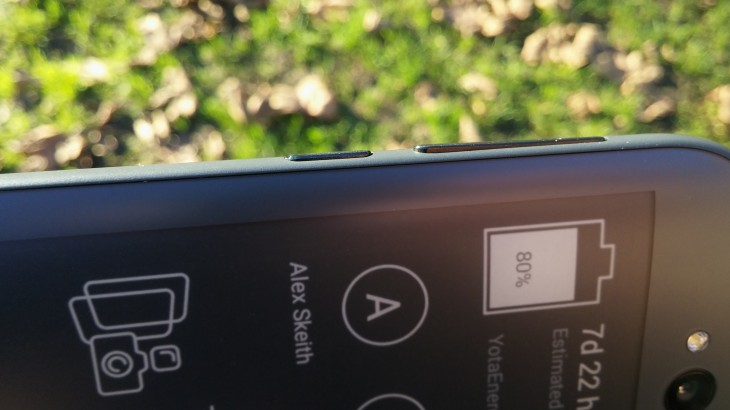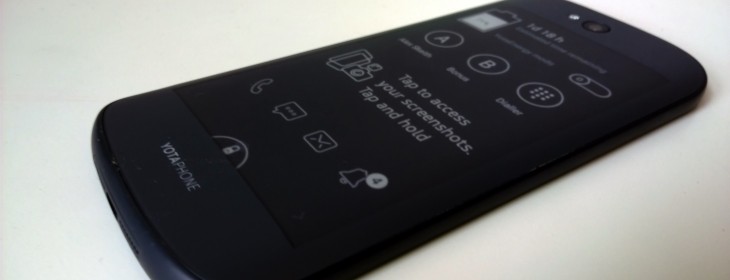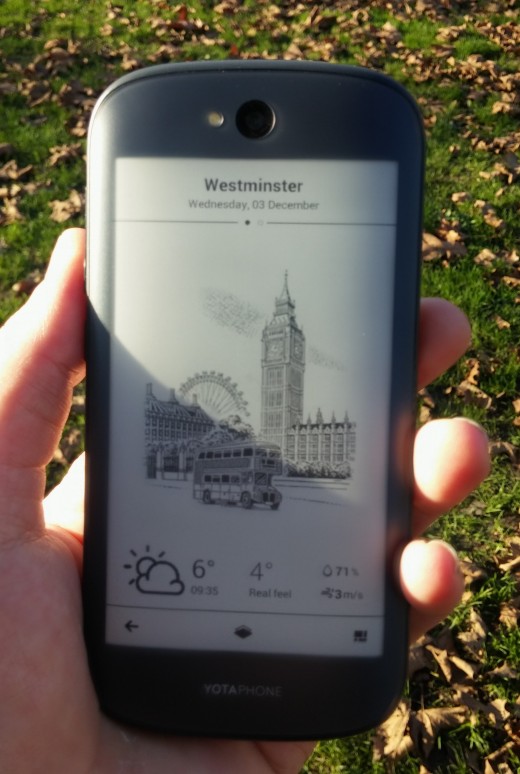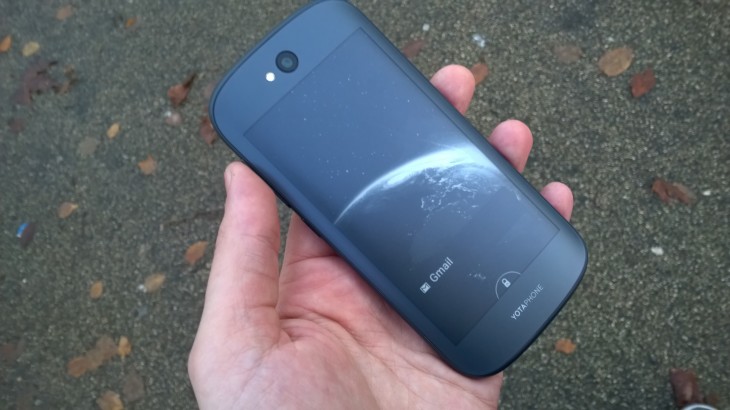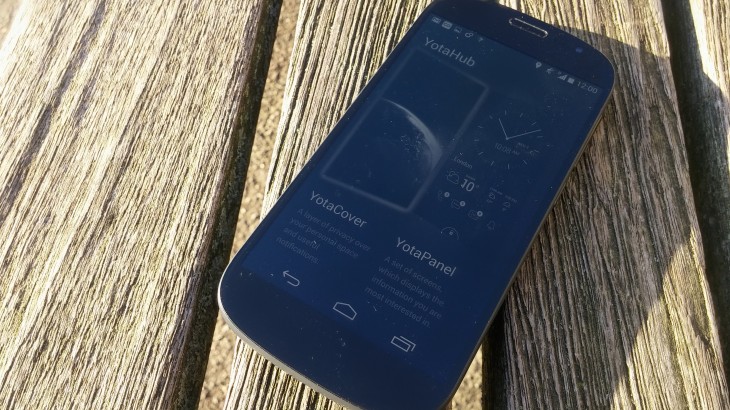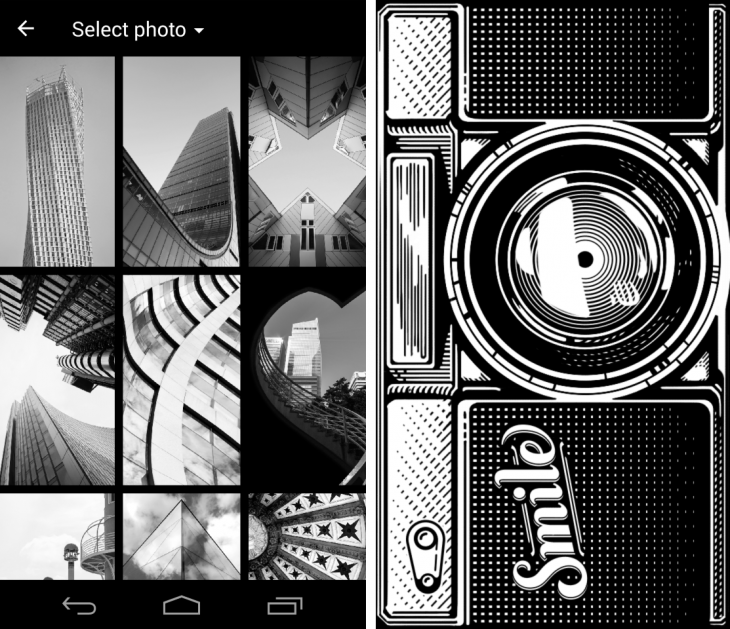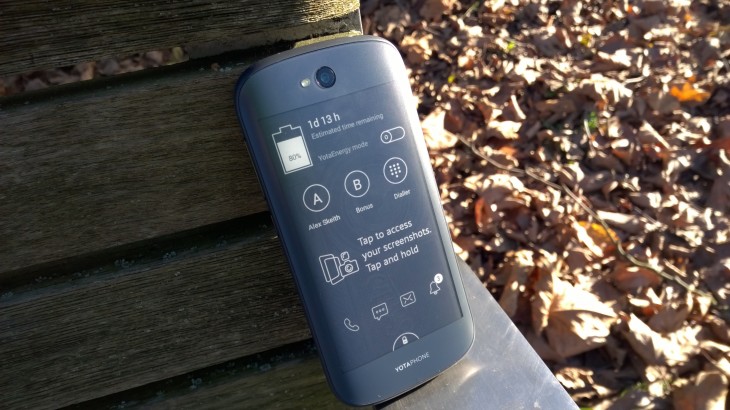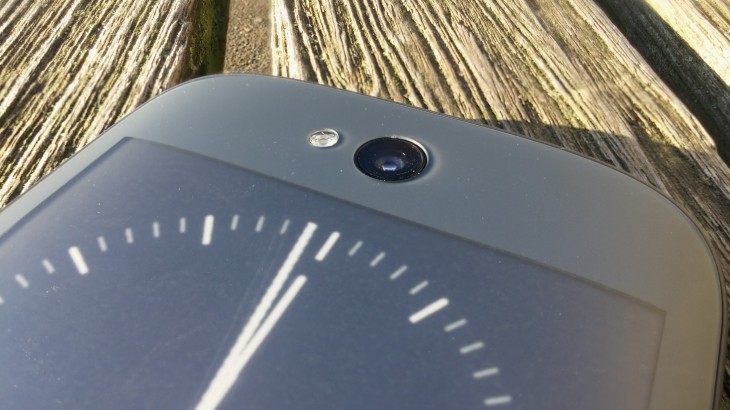
News that the YotaPhone 2 will be available to buy in the UK and Europe imminently brings a second bite of the cherry for Russian manufactrer Yota Devices and its e-paper display equipped smartphone range.
This time around the concept of a dual-screened device has been refined and now the entire rear electronic paper display (EPD) is touch-sensitive, allowing it to be used far more freely than previously.
Tweaking the design and concept is one thing, but that doesn’t necessarily translate into a superior user experience. We spent a few days with the new device to see if it could outshine the more mainstream handsets on the market as Christmas approaches.
Hardware and design
The YotaPhone 2 has a far more conventional appearance and design this time around – where the first looked like a little cheese-shaped wedge, the successor is a more traditionally rounded affair.
What this results in is a far more comfortable handset to hold, if a slightly more anonymous appearance. At least until you turn it over.

On the front there’s a 5-inch 1080p Gorilla Glass 3-equipped AMOLED display (442PPI), and on the rear you have a full touch 4.7-inch EPD with a 960 x 540 pixel resolution. Under the bonnet, there’s a 2.2GHz quad-core Qualcomm Snapdragon 800 processor and 2GB RAM.
On the right-hand side of the device, there’s a volume rocker and a power button. On the unit we tested, the volume rocker seemed to be a bit ‘sticky’ – when turning the volume up it often got lodged in position, resulting in the volume rocketing up to maximum unintentionally. Ouch. Hopefully this is just pre-final production teething issues, but it’s worth keeping an eye on if you’re considering buying one.
There’s no dedicated camera shutter button, so you’ll need to do that by tapping the screen, but that’s the case for quite a few handsets so isn’t a deal-breaker.
The biggest potential downside for me is the fixed internal storage limit of 32GB – with no microSD slot, you’ll need to resort to cloud storage for some of your items if you run out of space, or moving items off your phone onto other local storage. It’s not the end of the world, but it is a little annoying. In this instance, the concession is due to having to accommodate an entire additional display within a regular-sized chassis.
The SIM slot is hidden away under volume rocker (perhaps contributing to the stiffness, as we saw with the Droid Turbo), and the power button is next to it.
That EPD screen
The always-on rear display is 4.7-inches in size and of a relatively low (compared to a standard LCD or OLED display) resolution at 960 x 540 pixels. However, for most uses it’s really designed for, that’s just fine.
As well as lending itself very nicely to e-Books, the real raison d’être for the rear display is as a battery saving device. Anything can be sent to the back screen, but due to the way the screen refresh works on EPDs, it would actually use more battery to play a game there.
For example. I actually tested out Asphalt 8: Airborne on the rear display, and while you could play, it wasn’t a very good experience considering the low-res display and slower refresh rate. Using it with a navigation app like Waze also doesn’t do it many favors.
What it is good at, however, is providing you with all sorts of status updates and other content from your phone without draining your battery.
To manage which native notifications show up here you use the Yota Panel settings. Here you can select from pre-set themed panels, or select a blank layout and add your own apps and info so that you get whichever effortless notifications you desire.
To add some additional privacy for what is displayed on the EPD when the front screen is in use (you might not want the content of your incoming text messages showing up around strangers, for example), you can use the Yota Cover mode – again, there are options here to play around with so you can tweak exactly how private you want to keep your device.
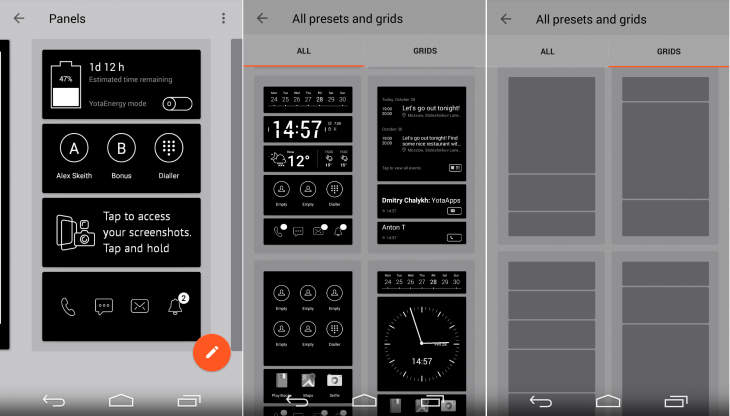
If you’d rather use the rear display as a photo gallery/screensaver, you can do that too; either by selecting specific Facebook albums or using images stored on the phone. There are also some pre-installed Yota images arranged into different categories too, like cities, animals, architecture, etc. As with the first phone, you can also opt to show the default ‘smile for the camera’ image on the rear when using the main camera.
What’s particularly handy is that, just like the first YotaPhone, you can set the rear display to retain an image or screenshot if the battery dies, so for example, if you know you’ll need a particular set of directions later (or a phone number, etc.) but your battery is running low, you can take a screenshot and set it as the default image for when the battery dies. You probably won’t end up finding this feature useful every day, but when you do, you’ll be incredibly thankful for those directions.
As an added bonus, if you’re a selfie fan, having a whole display on the rear allows you to use the full 8-megapixel sensor for your snaps, rather than the forward-facing 2-megapixel sensor.
The EPD is also great for use in particularly bright settings as it doesn’t suffer from glare or reflection as a normal screen would.
In use
Unsurprisingly given the solid hardware specs, the phone acts very much as you’d expect. It doesn’t struggle with multi-tasking and while playing games won’t be as smooth as on some other devices, there were no real hiccups.
Yota Devices also takes a fairly ‘stock’ approach to Android, so if you’re familiar with the platform the device will hold few surprises there, aside from the EPD-related tweaks and apps, of course.
However, if you’re considering using the device with the rear display as your primary screen for optimum battery life, then you’ll probably find yourself getting a little frustrated at the navigation.
Having a full interactive rear display is definitely an advantage, but it’ll take some getting used to. On quite a few occassions, I was left pawing at the EPD trying to unlock it or swipe between home screens. Perhaps this gets a little more intuitive over time, but I definitely found myself having to attempt to carry out an action multiple times in order for it to register. Tip: when you want to unlock the rear display with a swipe, you’ll need to start from just below the rear display, rather than just at the bottom of it.
The refresh rate makes doing things like typing a message more tricky than on the regular display, but it’s certainly usable and works accurately enough to make hitting individual letters easy. Thankfully, there’s not really much delay between pressing buttons when doing something like sending an SMS – the lag comes in the words actually appearing.
One other minor quibble for me is the speaker on the bottom of the phone. It’s just about loud enough to be acceptable (although it pales in comparison to any phone with a dual front-facing setup), but the placement of it means that if you’re holding the phone horizontally in your hands (as you would to watch any video), it’s really easy to block the speakers, and therefore virtually all the sound.
Camera-wise the YotaPhone 2 doesn’t bring any surprises – it offers an 8-megapixel snapper on the rear and a 2-megapixel front-facing sensor for video calling and selfies (although, as already noted, you can use the rear camera for selfies with this phone).
While it doesn’t sound great on paper in comparison to the competition, the performance of the main camera was actually fairly reasonable in bright conditions, although the resulting shots tended to be a bit ‘lost’ in the shadows and were often a bit confused regarding color balance.
With less emphasis on the camera come fewer options to play around with, but there’s enough here for serviceable, if not overly artistic, snaps. Check out the few test images below.
With a short time for testing, the long-term verdict on battery life is still out for the YotaPhone 2, and exactly how long you get out of it will vary massively depending on how much you use that rear display for normal phone functions like calls, SMS and emails. Yota says that the Yota Energy mode adds an average of 8.5 hours battery life though. This mode is also configurable, allowing you to control exactly what is switched on or switched off when trying to conserve juice.
In short, if you were to ignore the rear display entirely, this would be a charge everyday device. With the EPD option always on the rear, now if you do forget to charge it, all isn’t lost – you can just use the EPD until you find some more power.
A real differentiator, not just a gimmick
If you’re considering the YotaPhone 2, you’re considering a phone that’s dinstinctly different to most on the market – and for some people that would be enough. Where the first YotaPhone delivered in theory, the second actually gets a lot closer to delivering an experience you could live with in reality. As stated many times already, having a full touchscreen display on the rear and adding the Yota Mirror functionality makes this device leaps and bounds ahead of the first generation model that just didn’t quite make sense.
While the rear screen gives longer-than-average potential battery life, it functions as far more than that – it’s a differentiator in a sea of phones that no other handset on the market can offer, but it comes at a cost. At points the EPD will downright frustrate you until you learn exactly how everything works, and building out the rear display means that other hardware tweaks around biometrics or fitness tracking are missing here but present on rival devices. Having tested it for just a few days, I’d need a longer period of time to be able to evaluate the genuine benefits of using a dual-screened device as my ‘daily driver’ beyond simple battery gains, but I’d rather have a second screen than a heart rate sensor buried somewhere.
The YotaPhone 2 won’t be to everyone’s taste, and you’ll need to spend some time picking your preferences and getting used to the rear display, but if you can force the habit, then the device offers genuinely useful functionality that you’re not going to find on current HTCs, Samsungs and iPhones. It just misses out some of the bells, whistles and refinements those devices offer to achieve its goals.
The YotaPhone 2 is available from YotaPhone.com priced at £555 in the UK and around €700 for Europe.
Read More: Dual screen, e-paper display-equipped, 5-inch YotaPhone 2 officially goes on sale tomorrow for £555
Get the TNW newsletter
Get the most important tech news in your inbox each week.

